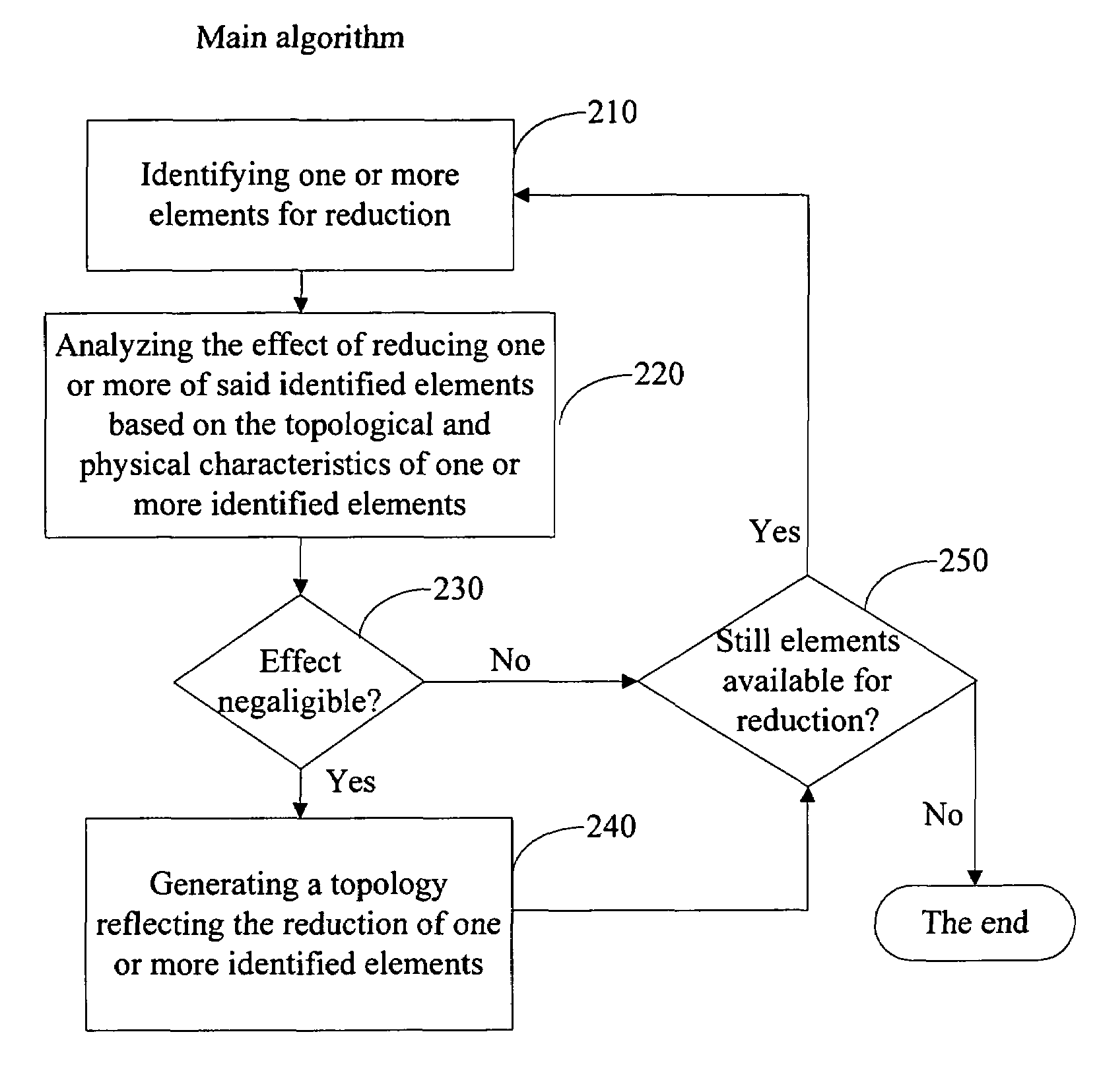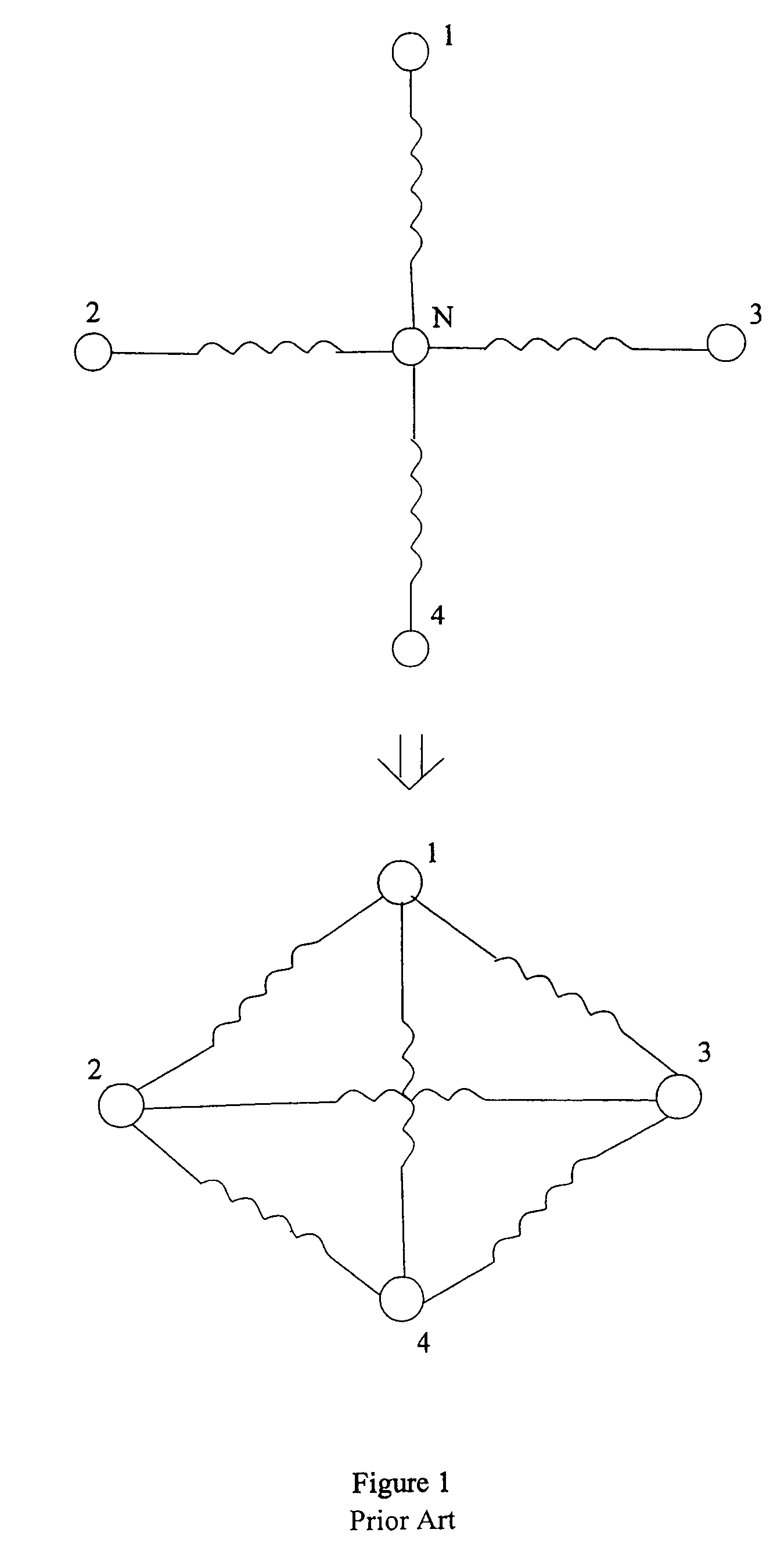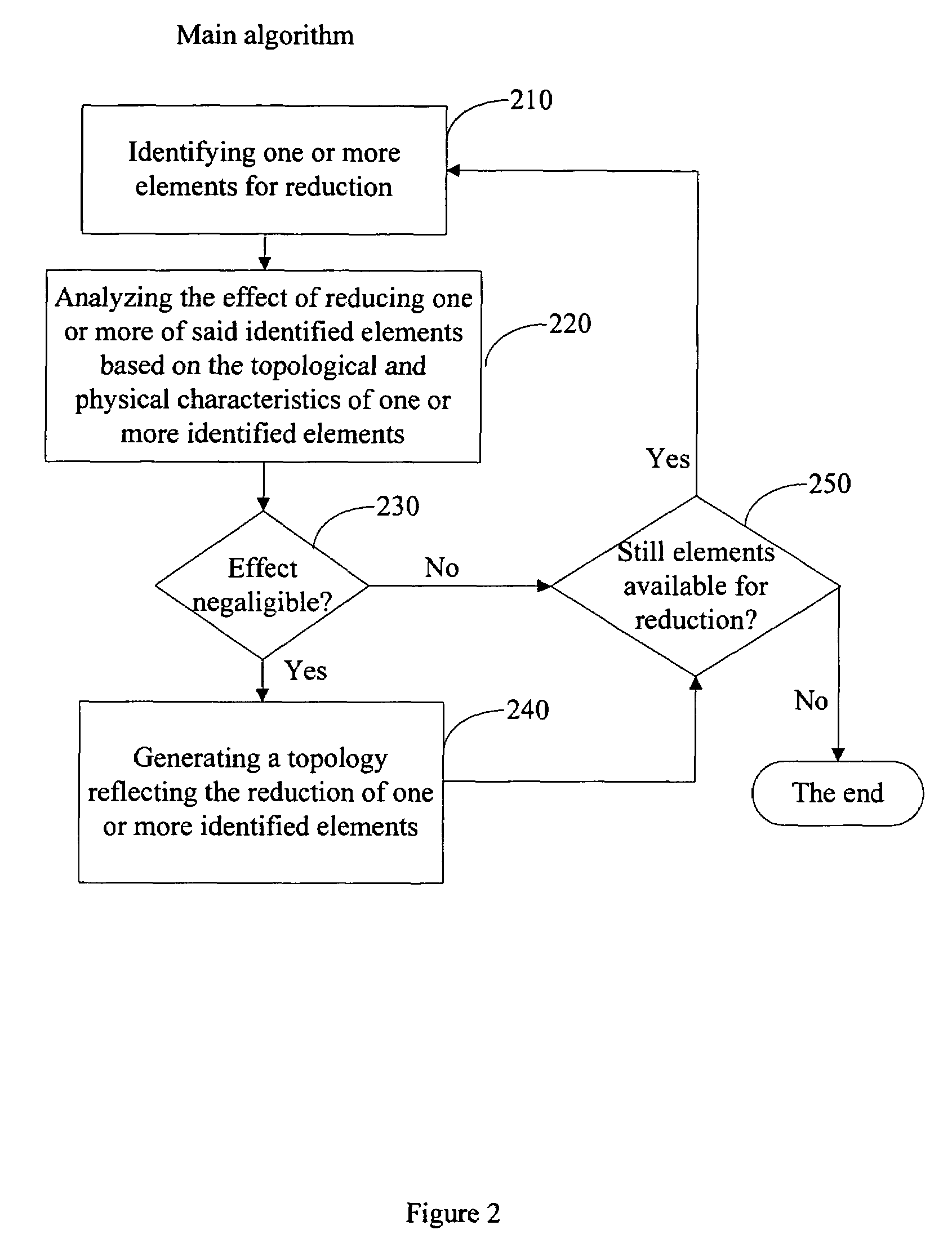System and method for reducing the size of RC circuits
a technology of reducing circuits and circuit topologies, applied in the field of circuit analysis, can solve problems such as inability to mathematical models that presume special, and often non-standard simulator capabilities, and achieve reduced circuit topologies that contain certain types of circuit topologies. the effect of the reduction schem
- Summary
- Abstract
- Description
- Claims
- Application Information
AI Technical Summary
Benefits of technology
Problems solved by technology
Method used
Image
Examples
Embodiment Construction
[0032]One embodiment of the present invention comprises a method of transforming a first topology to a reduced topology. The first topology may represent an abstraction of one or more objects. The one or more objects can be circuits or any other objects. The first topology may further comprise a plurality of inter-connected elements. These inter-connected elements can be circuit elements, such as nodes, capacitors, transistors, or any other elements. The reduced topology may be obtained by eliminating elements or making approximations.
[0033]A flow chart of one method of the present invention is shown in FIG. 2. Step 210 of the method identifies one or more elements for reduction. The one or more elements for reduction can be identified according to any applicable topological or physical standard. In one embodiment, symmetric nodes on the topology may be identified since these nodes may represent points or parts of the objects having similar behavior. Approximations of the first topo...
PUM
 Login to View More
Login to View More Abstract
Description
Claims
Application Information
 Login to View More
Login to View More - R&D
- Intellectual Property
- Life Sciences
- Materials
- Tech Scout
- Unparalleled Data Quality
- Higher Quality Content
- 60% Fewer Hallucinations
Browse by: Latest US Patents, China's latest patents, Technical Efficacy Thesaurus, Application Domain, Technology Topic, Popular Technical Reports.
© 2025 PatSnap. All rights reserved.Legal|Privacy policy|Modern Slavery Act Transparency Statement|Sitemap|About US| Contact US: help@patsnap.com



